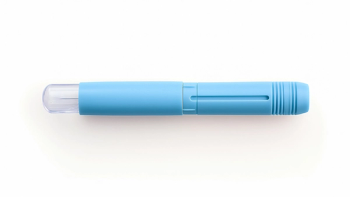
- Applied Clinical Trials-11-01-2008
- Volume 0
- Issue 0
Work-Life Notes from the FDA
The work-life benefits offered by the FDA and how it effects the employees overall work experience.
Upon a recent surge in new positions at the Center for Drug Evaluation and Research (CDER), the department has engaged in its most aggressive year ever in employee recruitment, with an ambitious goal of adding 663 individuals to approximately 444 new positions and 215 backfill positions for this fiscal year.
The department has accomplished 92% of its goal, with the addition of 612 individuals as of August, Russell Abbott, director of Office of Management, told Applied Clinical Trials.
In an agency that employs about 2882 people and oversees the entire regulatory spectrum for the clinical trials industry in the United States, it seems reasonable to speculate, "What is it like to work for CDER?"
Abbott provided insight into what it's like to work for CDER. And the following are several elements, ranging from living arrangements to salary, that may potentially influence an employee's day-to-day work-life experience.
Where you work: Employees work on the billion-dollar White Oak Campus, located in Montgomery County, MD, which encompasses all divisions within CDER. This campus offers "brand new high tech buildings and labs, connections between buildings, coffee bars, meeting areas, and balconies with furniture," described Abbott.
Where you live: According to CDER, most staff members reside in Maryland, Northern Virginia or Washington, DC, and some do commute from West Virginia and Pennsylvania. For most of these areas the cost of living fell above the national average of 100. Washington, DC, was marked at 138, Maryland at 128, Pennsylvania at 101.7, and Virginia at 101.8. West Virginia, however, stood alone at 94, below the national average (ACCRA Cost of Living Index, 1st Quarter 2008).
Incentives: "Federal jobs have a sense of security," Abbott noted. And working for this particular sector of the FDA "is empowering for people because it's where every single drug gets approved," he added. Beyond security and empowerment, working for CDER will supply an individual with solid regulatory experience, which is highly valued by employers: "As [employees] stay in FDA and become more valuable, pharma can come and cherry pick who they want," added Abbott.
Who they hire: CDER hires individuals from eight categories, including medical officers, pharmacists, consumer safety officers, biologists, chemists, microbiologists, pharmacologists, mass statisticians, and epidemiologists. While about half of the 612 recent hires have a PhD, MD or JD, about 100 have an MS, and around 90 have their BA. "We don't hire very many entry-levels. We recruit highly educated experts with an average of six years experience," Abbott explained.
Interviewing: CDER was granted direct hiring authority in order to meet its aggressive recruitment goal for the year, so the hiring process was cut down to a prescreening of applications and then an interview in order to eliminate the administrative burdens. "We were able to have them on board in as little as two weeks," Abbott explained. Without direct hiring authority, however, "the process itself can be long, it can take from 30 to 60, to sometimes even 90 days."
Benefits: Besides a standard benefits package, CDER offers alternative work schedules, such as flexible workday programs, compressed workweeks, and the option to work at home. "Management is tuned into the other needs of employees," Abbott said. "There are about 1000 individuals who have a flexible work environment or that work at home." CDER also provides paid training and tuition reimbursement, depending on its relation to the employee's position.
Pay Scales: Staff positions at CDER are based on pay categories identified by 15 different grades, each of which has ten steps. Eligibility to move up grades and receive pay increases is based on work performance and the time spent within a specific grade. Employees can move up one step per year for the first four steps, they can move up one step every two years for steps five through seven, and after three years they are able go to steps eight through 10. After step 10, employees are eligible to move to the next grade.
Individuals in the science areas are rarely under the grade of 12, the technical field usually falls in grades six, seven, and eight, and management is in grades five through nine, Abbott told Applied Clinical Trials.—Marissa Shapiro
Articles in this issue
about 17 years ago
The Changing Role of Data Services Project Managersabout 17 years ago
Europe Reviews Balance of Interestsabout 17 years ago
Work-Life Notes from a Large CROabout 17 years ago
Business and People Update November 2008about 17 years ago
First Year For-Profit Finds Big Successabout 17 years ago
Work-Life Notes from a Small CROabout 17 years ago
eClinical Software: November 2008about 17 years ago
Welcome to the 21st Centuryabout 17 years ago
Foundation Tackles CNS Trialsabout 17 years ago
The Changing Role of CRAsNewsletter
Stay current in clinical research with Applied Clinical Trials, providing expert insights, regulatory updates, and practical strategies for successful clinical trial design and execution.




.png)



.png)



.png)
.png)
